What to do with these leaves that are not dead, but still look quite ugly? If there are few enough of the damaged leaves, you can prune them off individually. When you have a lot of tattered leaves though, it's time to get more proactive.
Here are a couple more plants that look pretty bad right now:
 |
| Sasa tsuboiana |
 |
| Sasaella masmuneana 'Albostriata' |
There's no reason I couldn't leave these plants completely alone. The new leaves will be emerging soon, and the new shoots will also produce new leaves. There will be so much fresh foliage that these ratty leaves won't be visible most of the time. Probably. But they'll still be visible sometimes, for instance when the wind blows the nice leaves out of the way.
So they really do need to come off -- if I don't do it then I'll be regretting it later this year. So I'm going to take the pruning shears to these, as if they were a hedge I wanted to clean up. I won't mow them completely down to the ground though, because there are branches forming which will help fill the plant in faster:
So here's the Sasaella bitchuensis getting some attention with the shears:
The branch shoots are still intact -- at least some of them.
Here are the other two plants:
I actually trimmed this front one down a little more after taking the photo, and raked more of the cut leaves out of the way.
The plant in the background has much less damage, and I haven't decided exactly what to do with it yet:
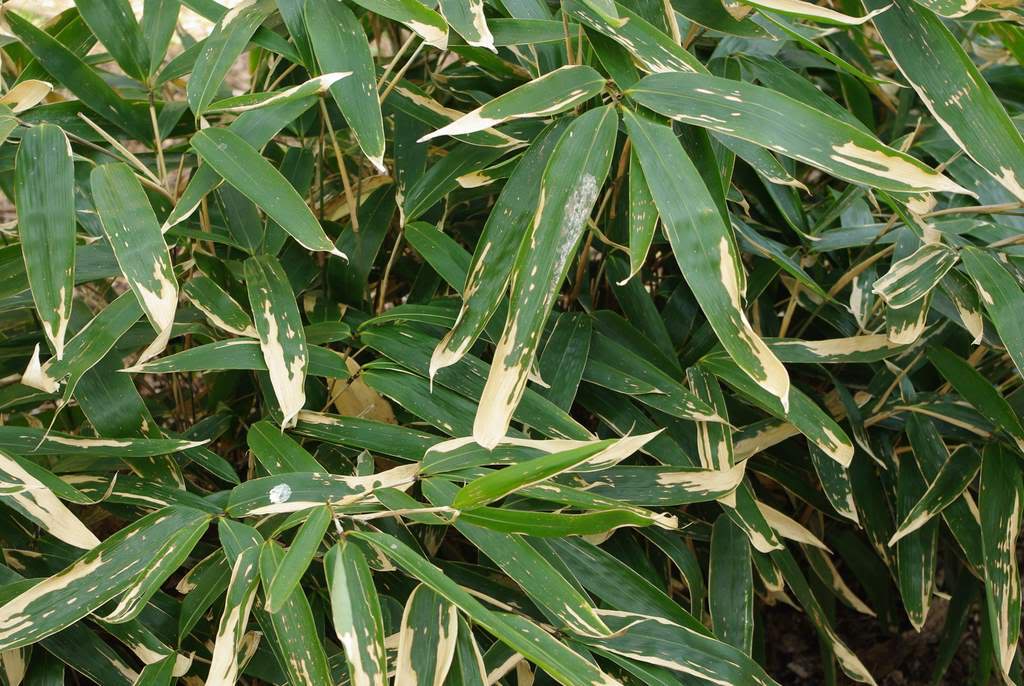 |
| Indocalamus longiauritus |
I may just trim off the worst leaves now, and do some touch-up pruning if needed later this year. The advantage to not removing the leaves completely is that they can provide more energy to the plant as it's producing new shoots.
I probably took more leaves off those first three plants than I needed to, but I've had some problems with mites:
Removing as many leaves as possible from the infected plants will help me get the mite problem under control. I'm not going to put all of these leaves into my compost pile either, because I don't want to spread the mites:
So I'll put these into the yard waste pickup. Unfortunately I don't have any of those brown paper yard waste bags -- I've never used one before, ever! -- so I'll keep them in this garbage can until I can get some bags.
As painful as this sort of cleanup is -- it's difficult to remove the mostly-green leaves -- it's really essential to having better looking plants throughout the summer. I'm getting better, as I barely hesitated before chopping into these this year.
Hurry up with the new leaves, as looking at a bed full of sticks isn't something I want to be doing for too long!
I've got several more bamboos with this sort of leaf damage that I need to take care of now too, and the new shoots will be starting any day now... this is really bamboo season in my garden!
.

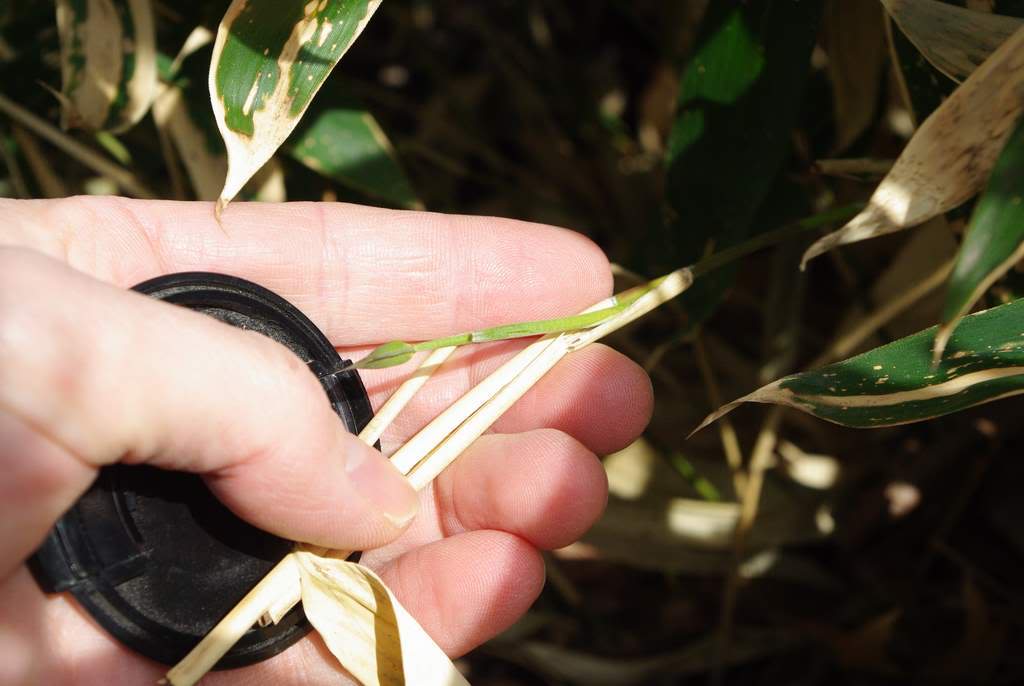
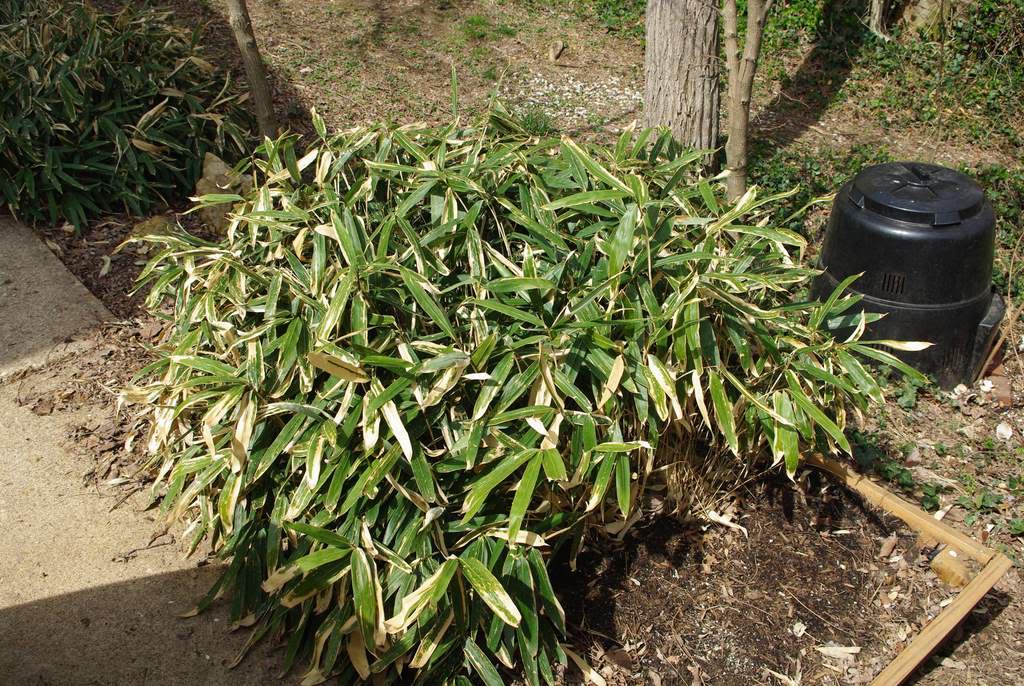

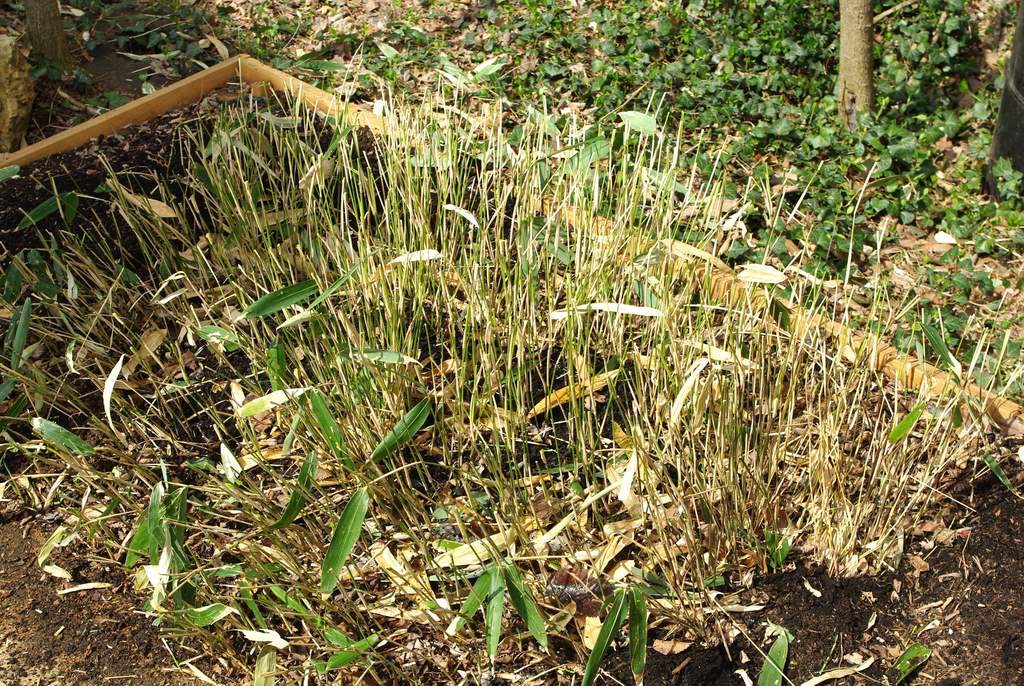
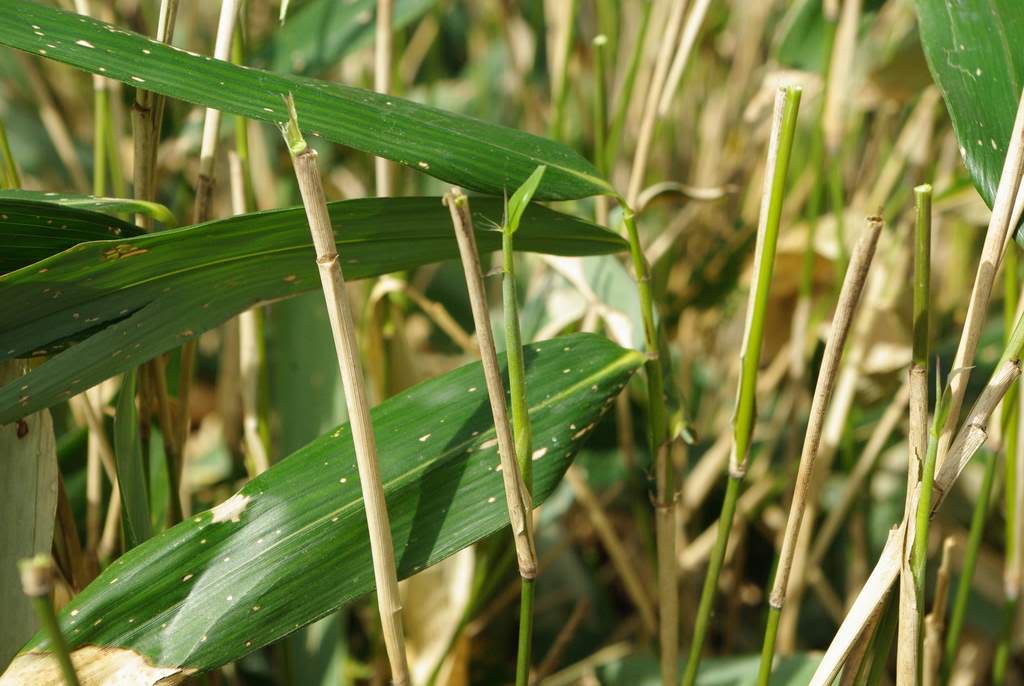
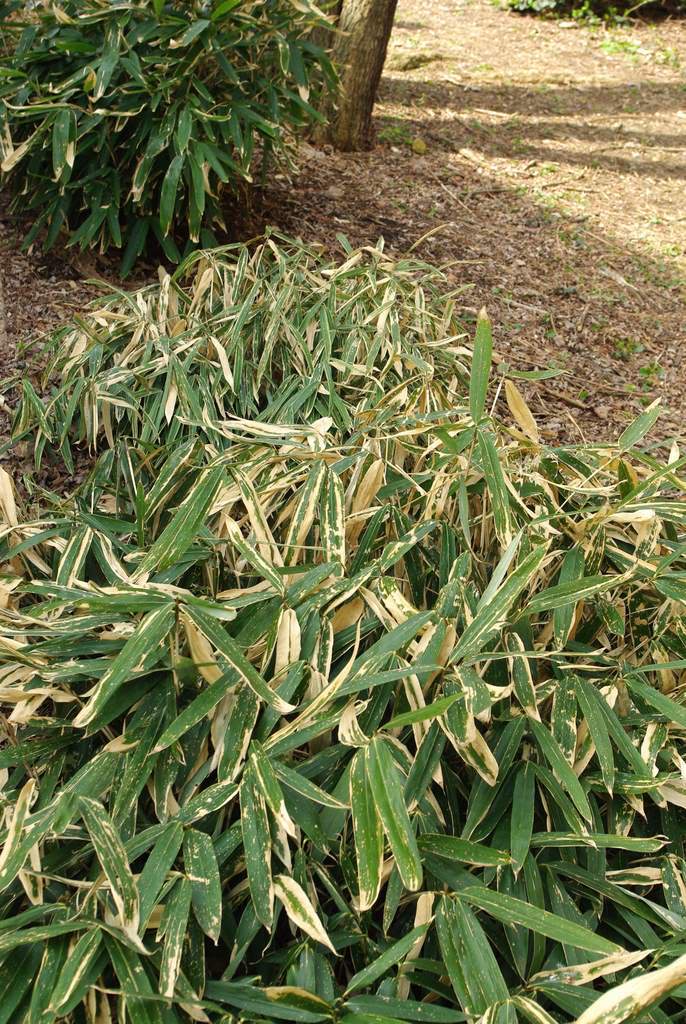
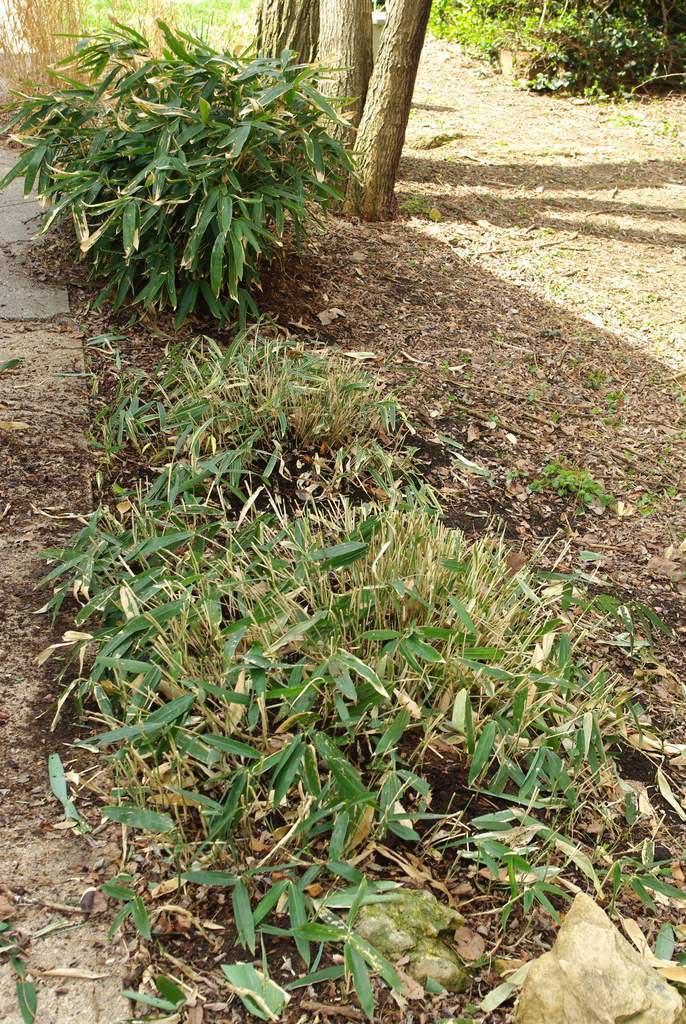

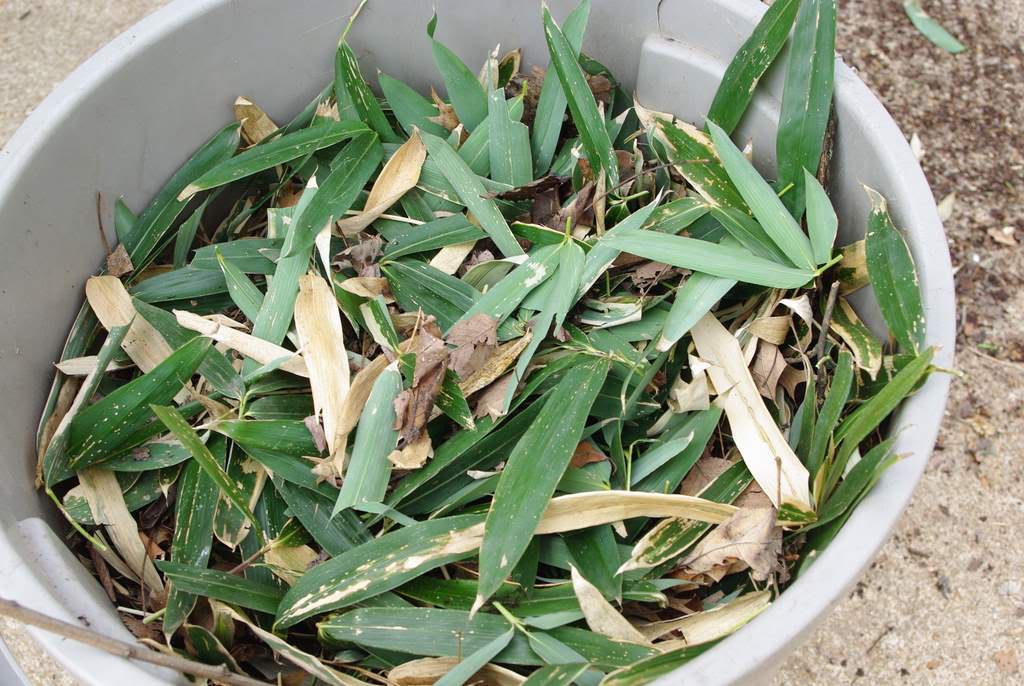
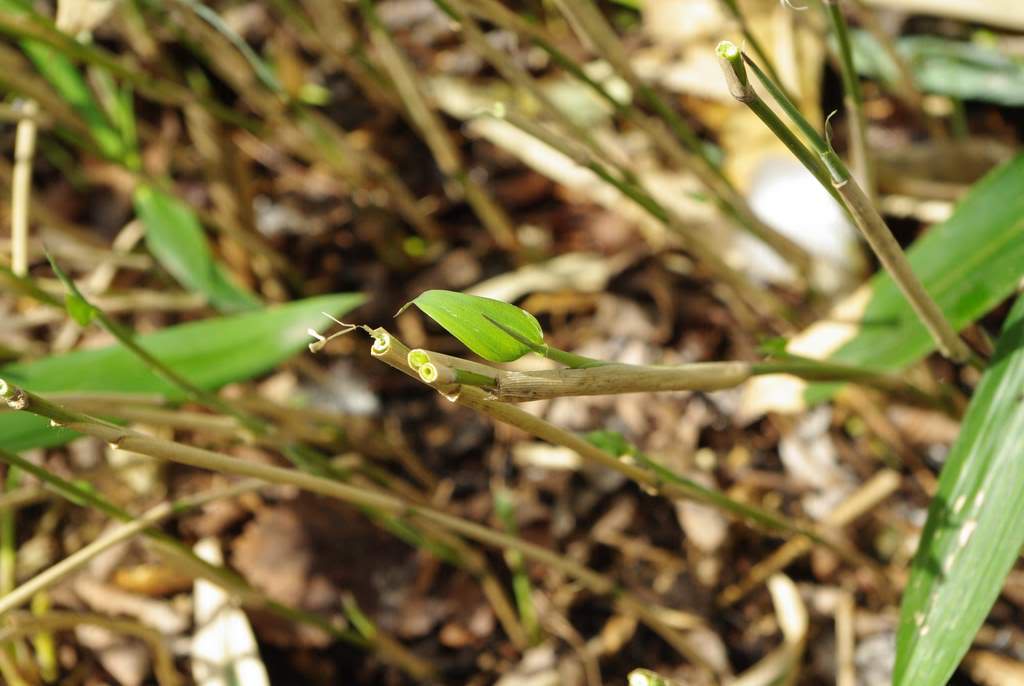
I know how you feel! I gave my Pleioblastus viridistriatus and Sasaella masmuneana 'Albostriata' pretty radical haircuts, too. Hopefully they'll be back to their former glory very soon.
ReplyDeleteGerhard
:: Bamboo and More ::
Gerhard: you could have mowed them both completely down. Viridistriatus topkills for me so gets mowed down to 3" tall each year, but comes back stronger than ever.
ReplyDeleteI'm a little frightened to see how far this has spread in the one direction because I didn't rhizome prune on that side. Will soon know.
The great part about these guys is that they don't fly, so they're kind of like miniature aphids. Since it doesn't look like you have that many bamboos, you could probably get an extensive treatment to eliminate all the mites.
ReplyDeleteI periodically inspect my groves for stuff like this, and I also check for vole activity too which I haven't seen yet. I just have a lot of birds pecking around my bamboos and squirrels digging around looking for some fresh shoots.
Steve: unfortunately the mites are transferred from plant to plant by wind, birds, people, etc.
ReplyDeleteI forgot you have those bamboo-loving squirrels up there. The squirrels here like to dig, but they're not looking for shoots.
My goodness, I gardened in St Louis , well Chesterfield, for 6 years and never even thought of bamboo. I'll bet it wasn't available then. I remember one neighbor had a small crape myrtle bush which she diligently covered with boxes every winter. She was form the south and just had to have one. I must go through your photos to see if I can see it when in full swing.
ReplyDeleteHi Alan!
ReplyDeleteThanks for visiting green out every window.
Have you tried horticultural oil on your bamboo? I have some in my garage, and to be honest I haven't used it much. But it's supposed to be fairly "safe" and ecologically friendly. Might be worth a try on your mites...